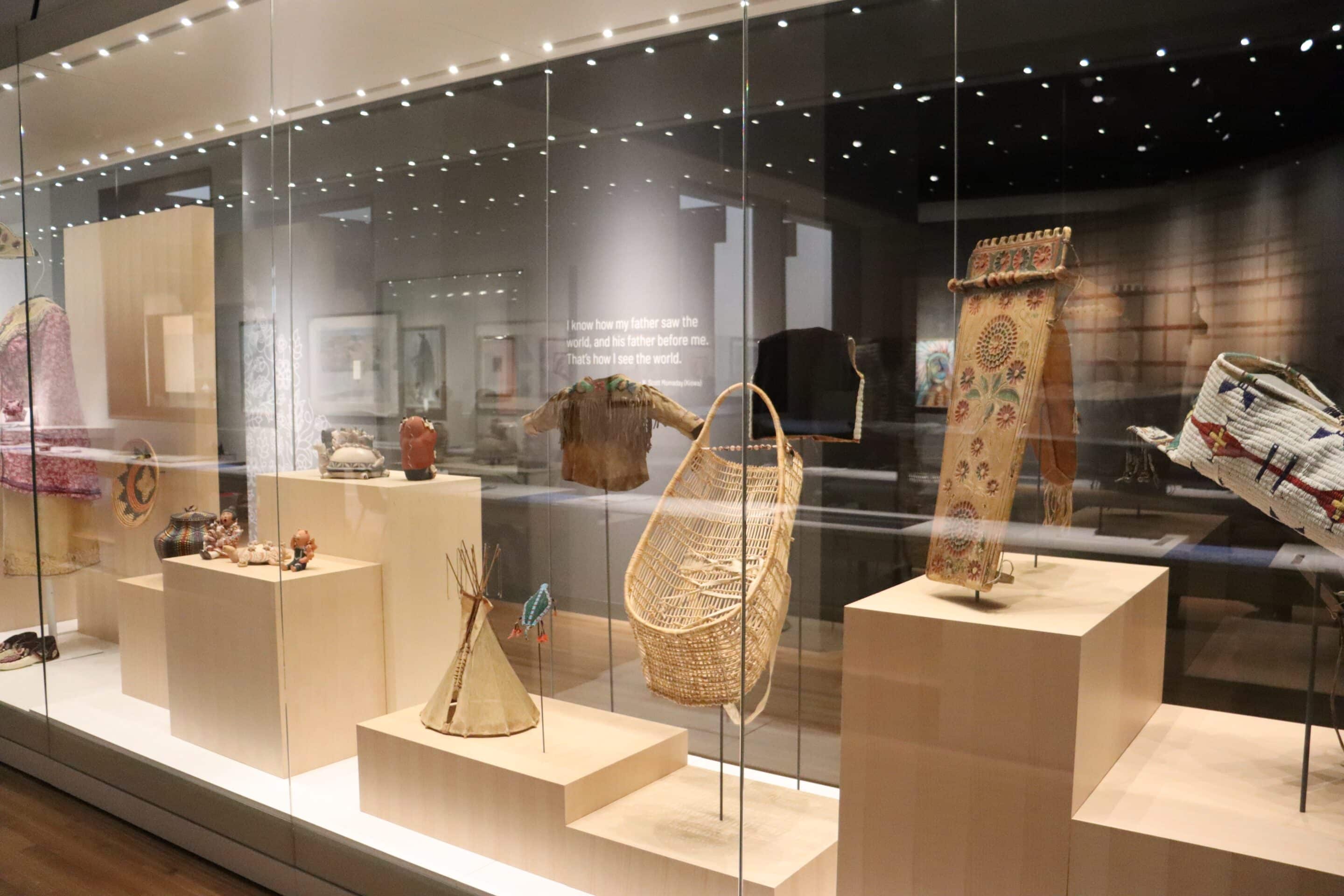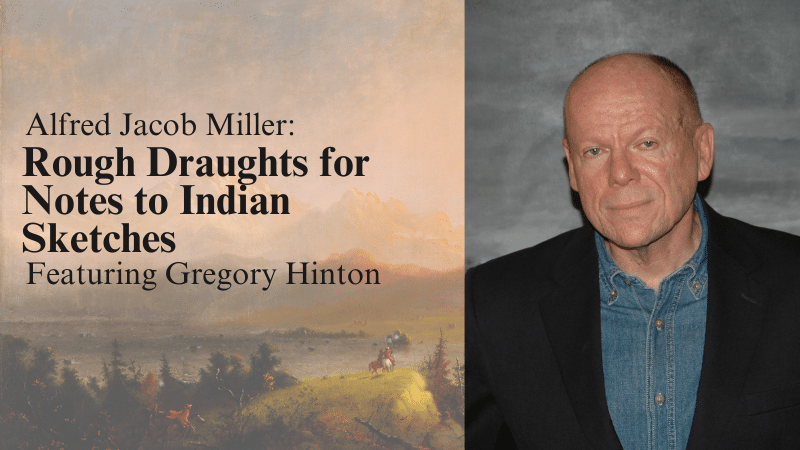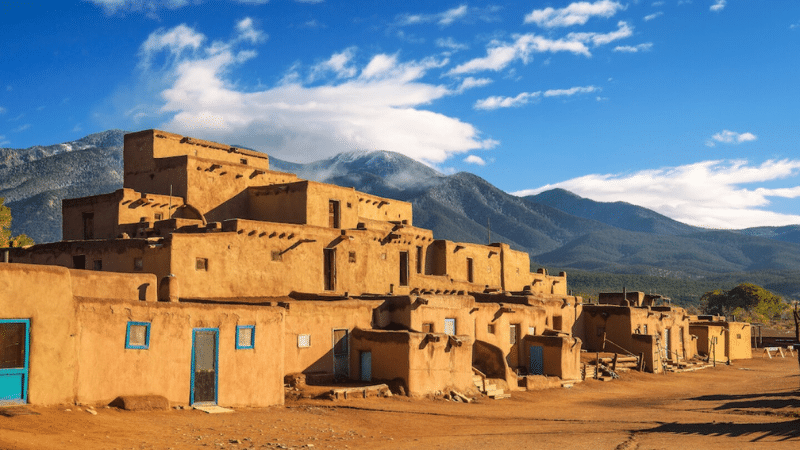Terry Tapia’s work in new galleries embodies stories shared by families, and reveals interesting details
By Dorene Red Cloud (Oglala Lakota), curator of Native American art

The new Native American Galleries are organized on the themes of Relation, Continuation and Innovation.
The Eiteljorg Museum’s newly re-envisioned Native American Galleries opened in June 2022 with the ongoing exhibition, Expressions of Life: Native Art in North America. Having spent much time selecting the artwork to exhibit in the new galleries, I identified several pieces that are highlights of the museum’s Native American and First Nations art collection.
A large portion of the galleries is dedicated to the theme of Relation, which discusses how the First Peoples of North America relate to one another and to the world around them. Family is an integral aspect in the lives of Native peoples as it provides structure and serves as a model of how one behaves and ultimately interacts with others.
Within the large glass case about Family in the Relation part of the galleries is a small subsection called Storytellers, which features clay figures created by New Mexico Puebloan artists. A storyteller is constructed out of clay by hand, utilizing the coil method, and features a main figure that most often has its eyes closed and mouth open as it is engaged in speaking. Surrounding this central figure are smaller ones that act as children who are actively listening.
One beautiful example of a storyteller was created by Tesuque artist Terry Tapia, who is known for her small clay hand-built figures such as skunks, lizards and birds that are painted in white, red and black. Her community is the Tesuque Pueblo — or, in Tewa, Tets´úgéh Ówîngeh (“village of the narrow place of the cottonwood trees”) — which since A.D. 1200 has been situated in the foothills of the Sangre de Cristo Mountains, 10 miles north of present-day Santa Fe.
Tapia’s turtle storyteller piece is an adaptation of the customary-style storyteller that Cochiti Pueblo clay artist Helen Cordero first created in 1964, modeling it after her grandfather, Santiago Quintana.
Oral tradition is the focus of these storytellers as they represent the important function of imparting the knowledge contained in the narratives conveyed by elders, a role they have been serving for thousands of years. As humor and whimsy sometimes is a focus in Native art, Tapia’s storyteller embodies a sense of belonging, family and moments when we are inside, nestled next to a family member recounting a memory or sharing a cautionary tale.

Terry Tapia (Tesuque Pueblo, born 1930)
Untitled (storyteller), 1990-2005
Carved clay, paint
Gift of Helen Cox Kersting in Memory of Dr. Hans Joachim Kersting
2008_8_545_201
Always something new in galleries
Works such as Tapia’s in the new galleries range in medium, technique and date, but they share one thing in common: rotation on and off exhibit. Artworks such as clothing, works on paper and weavings are light-sensitive, so from time to time they must temporarily go back into the vault and away from light to prevent fading; and they are replaced in the galleries with different works. In curating this exhibition, I selected up to four “like” items that could be rotated on and off exhibit every three to 12 months. Although ceramic objects such as storytellers are not sensitive to light, they also are rotated in and out periodically, which allows the museum to put different items on view.
This means the integrity of each artwork is preserved; and for museum guests, different artworks can be seen and appreciated every few months. If you have not visited the new Native American Galleries since their reinstallation, be ready to come across riveting Native works. And if you toured the galleries last year, please return to the Eiteljorg and explore them again, as there will be something new on exhibit now.
Editor’s note: This article appeared in the February 2023 issue of Storyteller magazine.









